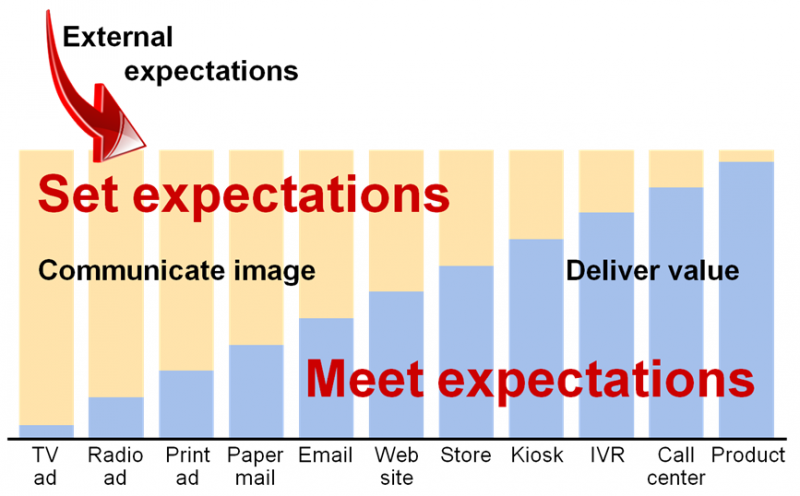Customer Experience Defined
If you’re reading this post, you’re someone who cares about customer experience. You might even be one of the professionals who works in the field of customer experience full-time.
So I’m going to go out on a limb here and guess that you occasionally get the question, “What is ‘customer experience?’”
Now maybe when you’re asked that question, it isn’t phrased so directly (or politely). For example, I get asked, “Isn’t customer experience just marketing?” And, “How is customer experience different from customer service?” But the bottom line is that people are looking for a definition that’s crisp, useful, and distinct from the definitions of other things that companies do. They are right and reasonable to ask for this — but collectively those of us who work to improve customer experience have failed to answer them.
I mean no offense to the many people out there who have tried to define “customer experience.” I’ve read many of the attempts that are out there, and the ones I’ve seen tend to be longer and more convoluted than necessary.
Not that customer experience is an easy concept to define. The customer experience team at Forrester has been debating the definition of customer experience for a while now, and it took us until recently to reach consensus. We now define customer experience as:
How customers perceive their interactions with your company.
Let me tell you how we got there. We started with the customer experience pyramid, which says that good customer experiences are three things from the perspective of the customer. They are useful (deliver value), usable (make it easy to find and engage with the value), and enjoyable (emotionally engaging so that people want to use them). You may recognize this framework as the basis of our Customer Experience Index.
Only your customers can tell you whether they found their experience useful, usable, and enjoyable. And that is totally a function of their perceptions — hence, the first part of the definition.
The second part of the definition of customer experience zeroes in on interactions — not ad impressions, not even word of mouth. While those two things are important in that they set expectations of the brand, they don’t deliver on those expectations — i.e., fulfill the brand promise. Here’s how we think of that equation:

So what is an “interaction?” It’s when you and your customers have a two-way exchange. When customers navigate your Web site, call into your contact center, go into your retail location, talk to one of your employees, buy your products, use your products, respond to your emails — that’s when they’re making judgments about whether or not you meet their needs, are easy to do business with, and are enjoyable to do business with. That’s when they’re having an actual “customer experience.”
By now, you may be wondering why our definition doesn’t include any mention of time. The answer is simple: Customer experiences happen across many time frames, including the lifetime of customers’ relationship with a company, a set of interactions that may take days or weeks to complete a single goal (like visiting a Web site to do research and then going to a store to complete a purchase), and individual interactions (like a call to customer care).
There is nothing that is inherently a “customer experience” in any of these time horizons. Certainly, companies can and do measure all of them, and most understand the difference between tracking lifetime customer experience and tracking the impression left by a single event. So putting time boundaries around the core definition of customer experience adds noise at best and leads to confusion at worst.
Okay, so why do we care so much about the definition of “customer experience” anyway? (Clearly, I cared enough to write this long post.) It’s simple. The definition frames the discussion around what customer experience professionals should focus on, where their responsibilities intersect with those of other types of professionals (like marketers), what results they can expect to produce for their businesses, and how they should measure success.
So how do you define “customer experience,” and how does that influence what you do? I welcome your comments!
Get the latest insights on customer experience from Forrester. Visit the customer experience hub.
